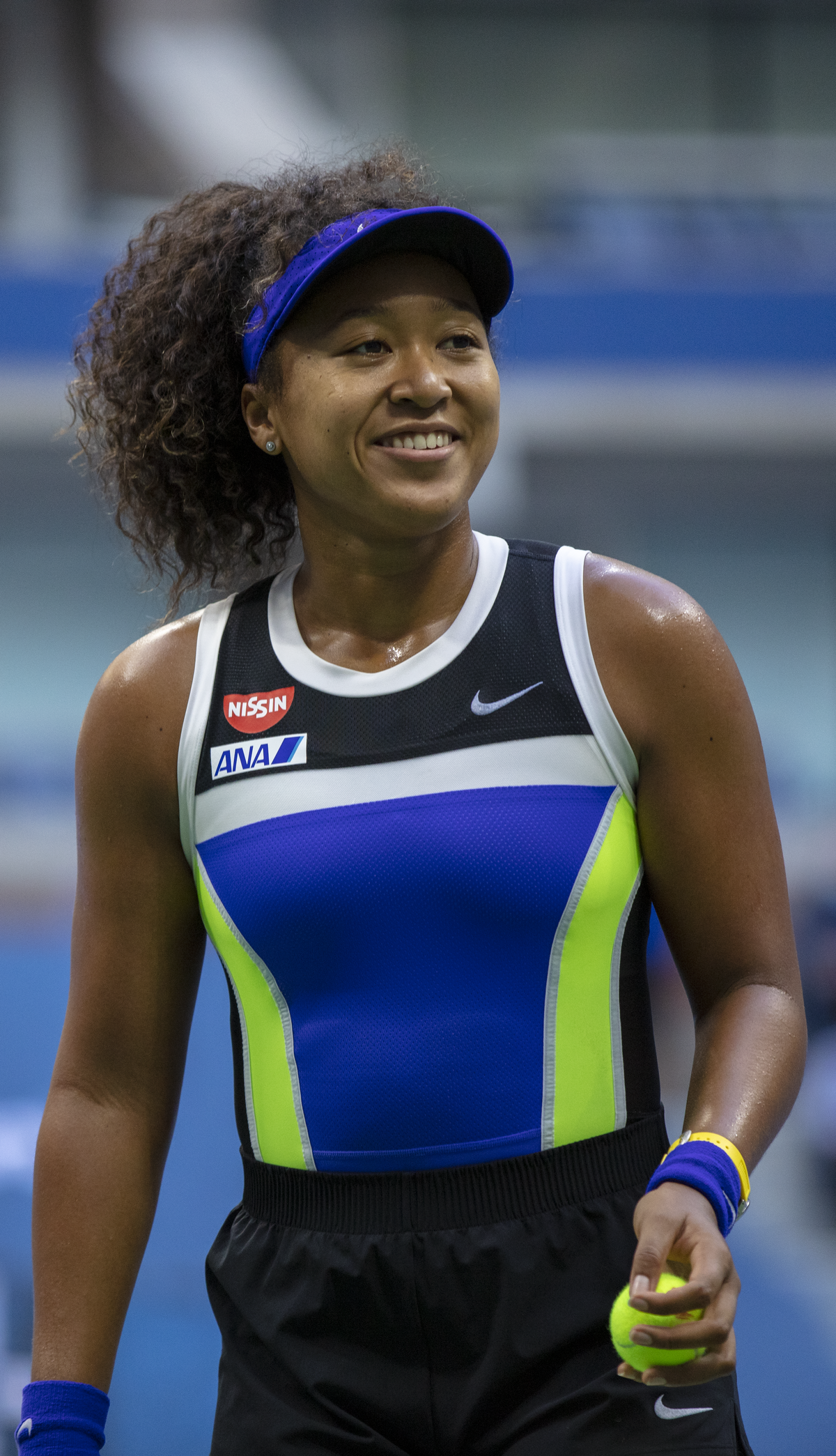NAOMI OSAKA AND THE COMPLICATIONS OF AN AFRO-JAPANESE MIND
By Femi Olugbile
Naomi Osaka is a 23-year-old lady who plays tennis for a living. A few days ago, she had the honour of ascending a flight of stone steps, torch in hand, before all the world, to light the flame to ceremonially commence the 2020 Olympic Games in Tokyo, Japan.
She was the hope and the pride of the Japanese nation, going into their home Olympics in a COVID19 infested atmosphere where thousands of Japanese were still coming down with the Delta variant daily and there was a fear the Olympic games would be the super spreader to end all super spreaders. Contesting for the women’s singles tennis title, Naomi blew away her first two opponents in an imperious fashion. And then, just when her countrymen were already assuming the girl whose brown face adorned every poster on the sidewalks of Tokyo would bring them a gold medal, she lost her next match with barely a whimper.
In truth she has been out of circulation for a few months, after walking off the French Open complaining that facing journalists at the mandatory post-match press conference was stressful for her, and that she had been struggling with mental health issues. Subsequently she missed Wimbledon.
Tokyo was set to be her return to the limelight, in her homeland. Cynics, and people who generally made a point of keeping themselves informed on such matters, were quick to observe that Naomi, in her hiatus period, did not exactly allow the grass to grow under her feet. She modelled for Japanese and sportswear designers. She posed in alluring finery in SPORTS ILLUSTRATED. She wrote an opinion piece for TIME magazine.
And now she has lit the Olympic flame, joining such legends as Mohammed Ali in that honoured ritual.
Who is Naomi Osaka? Why is her surname ‘Osaka’, after her mother, Tamaki Osaka, and not ‘Francois’, after Leonard Francois, her father?
Naomi was born in 1997, in a suburb of Osaka, Japan. Her parents had met when her Haitian American father was visiting Japan as a college student from New York. Leonard Francois’ explanation for why his two daughters adopted his wife’s surname is that they were born in Japan, and it was simply convenient to give them a Japanese identity.
Tamaki’s parents were very upset with the relationship and ostracized their daughter for several years. They would not begin to acknowledge Naomi until she was well into her teens and had started to win championships. When Naomi was three years old, the family moved to Long Island, New York, to live with her father’s parents. Leonard was no great tennis buff, but he was impressed by the story of how the father of the Williams sisters had coached them to become champions. Having discerned sporting talent in his girls, especially Naomi, he decided to devote time to training them.
The rest, as they say, is history.
The older sister went on to have a playing career of sorts. But it was really little Naomi whose star began to rise in the firmament. Naomi has become the first Japanese to win four grand slam tennis titles. Japanese national pride welled up when their daughter, looking dark and African in her flowing braids, but also looking unmistakably Japanese in her essence and physiognomy, walked up the steps of the stadium to light the flame.
But Naomi is struggling with her inner demons. She is the highest earning female athlete in the world, even after walking away from Wimbledon and the French Open. She makes more money than her idol – Serena Williams. As much as her exquisite talents, her fortunes have been helped by here Japanese-ness, and by the fact that, after initial hesitation due to her ‘black’ blood, the Japanese have overcome their genetic fastidiousness and embraced her with a passion. Japanese youths, normally insular, even marched on the streets of Tokyo in support of ‘Black Lives Matter’, because of Naomi.
In the midst of success and fame, the demons in Naomi’s head shocked her into awareness that she was more than the squeaky-clean Japanese prodigy that was being celebrated in the press and in sports merchandise all over the world. She was also African, heir to an ancestor brought in chains from Africa to Haiti. That ancestor ultimately gave birth to Francois, who gave birth to Naomi. She would have no peace till she lived that side of her life, too. And so Naomi got on the streets, demonstrating with #Black Lives Matter after the murder of George Floyd. In each of her seven victorious matches at the American Open championship, she used one out of seven face masks, each one emblazoned with the name of a black person who had been violently done to death by systemic racism in America.
Naomi, by her own admission, is a shy girl who is struggling to be true to herself. The Japanese, love her now, and embrace her as their own, even with her afro hairdo and flowing braids.
Being afflicted with strong, sometimes contradictory passions and wanting to satisfy them all is a heavy strain on the mind of a young, impressionable Afro-Japanese lady who just happens to be the highest paid sportswoman in the world. She wants to do good, and she wants to do right. The trouble is finding the right balance and learning to keep something for herself.
It is the life Naomi has chosen for herself.
She has not won the Tokyo Olympic gold, but a whole new world is beckoning before her, opening new vistas and new possibilities for self-expression. The possibility of fizzling out like a falling star is also there, unwanted, lurking in the shadows.

